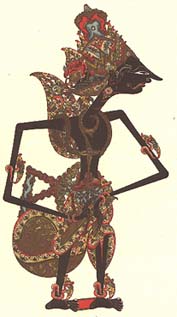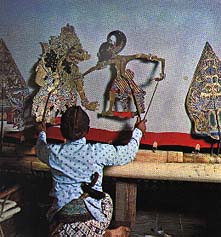
Subud was founded by R.M. Muhammad Subuh Sumohadiwidjojo (1901 - 1987). Of
noble Javanese descent Pak (a common Indonesian reverential name for father)
Subuh went through a series of deep inner changes. In it he received what he
termed the "Great Life Force", a manifestation of the Power of God.
He received that he had been given this Power to transmit to anyone who asked
for it in all sincerity. The inner contact received would lead that person
eventually to a communication with his divine nature. He/she in turn would be able
to transmit this contact (called: opening) to someone else at a later stage, etc.
The small groups that grew around Pak Subuh were combined after the war
under the name of Subud Brotherhood. It reached the West in a remarkable way.
Pak Subuh had told years before that an Englishman, who spoke many languages,
would come and bear the torch to other countries. His prediction came
true in 1950 at a time that Java was immerged in a struggle for freedom.
Husein Rofé (1922 - 2008)
 |
Hardly any foreigner was allowed to enter the sultanate of Yogyakarta in
Central Java,
where Pak Subuh, also affectionately called Bapak (= father), lived.
Yet, by a series of coincidences an English linguist, Husein Rofé (1922
- 2008), found himself
in Yogyakarta in 1950. There he met Pak Subuh. He became convinced of
his
spiritual gifts and asked to be opened. The results were so impressive
that he
decided to devote himself to the spread of this inner contact.
He commenced a number of groups in Indonesia and later in Japan, Hong Kong,
and Cyprus. In the latter group both Greeks and Turks participated, although the
island was torn by conflicts between these sections of the population.
In 1957 Rofé met John G.Bennett who had a number of groups all over the world working along
Gurdjieff's principles. Bennett remembered that Gurdjieff had intimated that
one should watch for a teacher to come from the Dutch East Indies.
John Bennett
 |
Bennett was so impressed by the state of consciousness that could be reached
through the
latihan in a short time that he advised his groups to test it.
(Photo Bennett at Subud Congress in Amersfoort, Netherlands 1963)
Subud has spread all over the world since. Yet, little is known about it as Pak
Subuh indicated that Subud ought not be spread by any form of propaganda.
Persons who are ready for it will be drawn to Subud members, or be presented
with an opportunity to come in touch with a group.
What Subud is and is not
Subud is not a teaching; it does not have a ritual, nor a teacher. It
is open
to members of all races and beliefs. Pak Subuh being brought up in a
Javanese
mystical tradition has explained the process of inner receiving in terms
of his
own culture. An exposition in line with our present-day state of
knowledge about man and the world he lives in is left to the members.
The
process evoked by the latihan brings Subud members an inward view of
their own nature, makes them understand their fellowman better. It
brings them in a state of mind in which they can see clearly the right
decisions to be made and the proper course to follow. Thus it will help
to develop a different meaning to their lives and a deeper insight into
their religious or spiritual believes.
The latihan
Subud is based on the experience that man can open himself to a divine power
that can heal and purify him. At the centre of Subud activities is the practice of a spiritual exercise, the latihan.
In it members give free expression to a process of purification.
Tensions in body and mind will disappear resulting in an inner harmony
permeating their being. In this state of wholeness a deep inner
communication takes place. A silent prayer takes over dependent
on the ability to surrender and yield to the spiritual life force.
Eventually it will result in a regeneration of being, a wholeness of
the fractured self, leading to a deeper spiritual life in tune with the
Infinite.
Although countless other benefits - material, physical and mental - have
been reported, a warning is given not to be guided by expectations.
Subud lays no claim on the individual. The object is not Subud, but
man
himself. Subud is an association of people dedicated to the wish to be
guided
from within. Its members will gain as much from Subud as they devote
themselves
to the art of living and receiving from within. The latihan will be
instrumental in accomplishing this. It releases tensions continuously.
After a latihan she/he will feel free -
fresh to undertake anew the tasks on hand.
Membership
For a deep-going purification an inner stability is required. Therefore
Subud is not open to everyone. Psychiatric patients are not advised to take
part. Applicants should not be addicted to drugs, or alcohol.
A member is expected to stand on his own feet - contribute to, instead of
lean on the group.
Normally a waiting-period of three months is observed before a person can be
opened. In this period of time the applicant's possible questions will be
answered and he/she may meet members of the group. This is also a time for
him/her to come to a definitive decision to be opened.
As pointed out, the results are strongly dependent on the way the
individual is prepared to apply what is received by him in Subud to his daily
activities. Pak Subuh has emphasized strongly that contact with our fellow man in our jobs, enterprises,
duties, studies, art, etc. present the primary challenge to show and develop inner
receiving. He has encouraged members to start enterprises together. A number of
them exist, as do Subud charitable institutions all over the world.
Literature (See also available literature link below):
- Bennett, J.G.: Concerning Subud (New York 1959)
- Geels, Antoon: Subud and the Javanese mystical tradition (Curzon Press,Richmond,UK,1997)
- Longcroft, H.: History of Subud (1901-1959)
- Lyle, Robert: Subud (UK 1983)
- Rofé, Husein: The Path of Subud (Berkeley 1988)
- Subuh, Pak Muhammad Sumohadiwidjojo: Susila Budhi Dharma (1956)
- Subuh, Pak Muhammad Sumohadiwidjojo: Autobiography (UK 1990)
- Sullivan, Matthew B.: Living Religion in Subud (UK 1991)
- Week, Istimah: The Man From The East (N.Y. 1996)
Links:
Video clips:
For further information please apply to the group nearest to you by checking the links above. Otherwise by sending an email to
For dutch readers:
For those who understand Dutch: Ook in Nederland bestaan groepen.
Voor een nederlandse inleiding, adressen en verdere informatie klik op:
website Subud Nederland
"Subud®" and the seven circles symbol are registered marks of the World Subud Association.
© text, photo's and video clips: Michael Rogge 2011. (Email address:
manandu@NOSPAMxs4all.nl , delete 'NOSPAM' from the address.)
Latest revision date: 13 Oct. 2011
Retrieved from: http://wichm.home.xs4all.nl/subud1.html
 Subud is one of hundreds of mystical movements (aliran kebatinan)
which have grown significantly in postwar Indonesia. Along with other
movements like Sumarah and Pangestu, Subud has attracted people from the
West and has now spread to about eighty countries. Despite the fact
that Subud leaders deny any relation to the Javanese mystical
tradition, it is one of the tasks of this study to show that the greater
part of Subud's conceptual apparatus is firmly rooted in the cultural
history of Java. Under the banner of change and renewal, Subud presents a
message which, fundamentally, is one of continuity in a society in
transition. In the first part, the author presents an overall picture
of the history of Javanese mysticism, particularly the concept of God,
the view of man, and the techniques recommended in order to bridge the
gap between God and man. In the second part, the rise of mystical
movements in post-war Java is discussed, along with a presentation of
three movements which attracted the West. The following chapters deal
with a biography of the founder of Subud, the basic concepts of Subud
and the meaning of the Subud spiritual exercise (latihan kejiwaan).
Subud is one of hundreds of mystical movements (aliran kebatinan)
which have grown significantly in postwar Indonesia. Along with other
movements like Sumarah and Pangestu, Subud has attracted people from the
West and has now spread to about eighty countries. Despite the fact
that Subud leaders deny any relation to the Javanese mystical
tradition, it is one of the tasks of this study to show that the greater
part of Subud's conceptual apparatus is firmly rooted in the cultural
history of Java. Under the banner of change and renewal, Subud presents a
message which, fundamentally, is one of continuity in a society in
transition. In the first part, the author presents an overall picture
of the history of Javanese mysticism, particularly the concept of God,
the view of man, and the techniques recommended in order to bridge the
gap between God and man. In the second part, the rise of mystical
movements in post-war Java is discussed, along with a presentation of
three movements which attracted the West. The following chapters deal
with a biography of the founder of Subud, the basic concepts of Subud
and the meaning of the Subud spiritual exercise (latihan kejiwaan).




